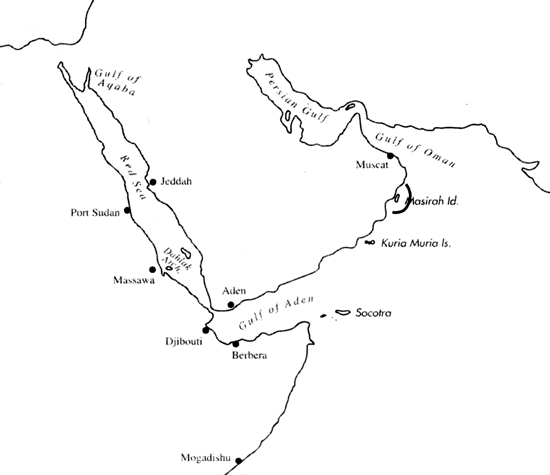Range: Masirah Id., Oman.
Description: Very small and light. Last whorl usually broadly conical, outline convex; left side concave basally. Shoulder angulate to carinate. Spire of moderate height to high, stepped; outline straight to slightly concave. Larval shell of 1.75-2 whorls, maximum diameter 0.9-1 mm. Teleoconch sutural ramps concave, with 1 increasing to 3 obsolete spiral grooves in early whorls, spiral sculpture not traceable in late whorls. Last whorl with spiral ribs on basal third.
| Shell Morphometry | ||
|---|---|---|
| L | 9-13 mm | |
| RW | -0.02 g/mm | |
| (10-11 mm) | ||
| RD | 0.70-0.77 | |
| PMD | 0.84-0.93 | |
| RSH | 0.22-0.28 | |
Ground colour white. Last whorl with an interrupted to solid, yellowish to blackish brown or olive spiral band at base and within adapical third; colour zones sometimes also axially arranged. Light subcentral band with a meshwork of pale grey background shades, edged with yellowish to dark brown spots; sometimes spirally aligned dark spots extending from base to shoulder. Dotted to dashed brown spiral lines from basal third to subshouldera area or restricted to subcentral area, partially with intermittent white dashes. Larval shell bicoloured: Initial part white, with a yellowish brown pre-sutural zone; remaining part grading to solid yellowish brown. Postnuclear sutural ramps with light to dark brown radial blotches crossing outer margins. Aperture showing exterior pattern.
Periostracum thin, translucent, with fine fringes on shoulder.
Animal dark grey; rostrum white distally, tentacles white (alcohol preserved material; Moolenbeek & Coomans, 1993).
Radular teeth stout basally and narrow adapically mostly not enrolled except for base where the margins of the chitin sheet are overlapping. Adapical part rounded at tip and of spongy surface-structure, with 3 barbs that are broadening and membraneous proximally; anterior barb bar-shaped and blunt, posterior barb triangular and pointed, middle barb intermediate in shape. Serration and basal spur absent (Rolán & G. Raybaudi, in press). Function of such a tooth aberrant in shape within the genus Conus (open canal instead of enrolled tube) requires new hypotheses.
Habitat and Habits: From 0.1 m below low tide level to about 6 m.
Discussion: C. boschorum is very similar to C. biraghii and C. korni. C. biraghii biraghii differs in its lower spire (RSH 0.12-0.19) and its often more ventricose last whorl (PMD 0.77-0.91); the weak spiral grooves below the shoulder of C. biraghii biraghii are absent in adult specimens of C. boschorum. C. biraghii omanensis has an often narrower last whorl (RD 0.61-0.74) with 1-2 spiral grooves below shoulder, a narrower (0.8 vs. 0.9-1) and more contrastingly bicoloured larval shell with fine radial ridges, and flat rather than concave teleoconch sutural ramps with distinct spiral grooves also in late whorls. C. biraghii congruens is distinguished by its narrower (0.8 mm) larval shell with distinct fine radial ridges and more strongly contrasting colours, its 1-2 spiral grooves below shoulder, and the prominent spiral sculpture on its early teleoconch sutural ramps. C. korni has more larval whorls (2.25-2.5) with fine radial ridges, a lower spire (RSH 0.13-0.24), pronounced spiral grooves on the early teleoconch sutural ramps, and 1-2 weak spiral grooves below shoulder. For the distinctions from the holotype of C. traillii, see the Discussion of C. biraghii. The juvenile stages of the sympatric larger species C. boschi and C. ardisiaceus cannot be confused with C. boschorum (Moolenbeek & Coomans, 1993).

C. boschorum range map
This section contains verbatim reproductions of the accounts of 316 species of Conus from the Indo-Pacific region, from Manual of the Living Conidae, by Röckel, Korn and Kohn (1995). They are reproduced with the kind permission of the present publisher, Conchbooks.
All plates and figures referred to in the text are also in Röckel, Korn & Kohn, 1995. Manual of the Living Conidae Vol. 1: Indo-Pacific Region.
The range maps have been modified so that each species account has it own map, rather than one map that showed the ranges of several species in the original work. This was necessary because each species account is on a separate page on the website and not confined to the order of accounts in the book.